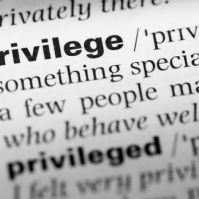 The Nineteenth Amendment to the United States Constitution reads as follows: "The right of citizens of the United States to vote shall not be denied or abridged by the United States or by any State on account of sex. Congress shall have power to enforce this article by appropriate legislation."
The Nineteenth Amendment to the United States Constitution reads as follows: "The right of citizens of the United States to vote shall not be denied or abridged by the United States or by any State on account of sex. Congress shall have power to enforce this article by appropriate legislation."
It was first introduced to Congress in 1878. It would take more than 41 years for the amendment to be added to the Constitution. On August 26, 1920, the 19th Amendment was certified as law. It hasn't even been 100 years since women finally got the chance to be part of the government process. Since 1971, the president has proclaimed August 26 as Women's Equality Day. Let's take a look at the history behind this day.
The Battle for Equality
The 1848 Seneca Falls Convention is traditionally thought of as the start of women's rights in America. The suffrage movement did not gain much ground until after the Civil War, a good 20 years following the convention. Women's voting rights were established in the western states. Wyoming granted women the right to vote in 1869, with Utah and Washington Territory following suit. Some states granted women the right to vote in municipal elections, while others granted them the right to vote in national presidential elections. Every state had different restrictions.
Elizabeth Cady Stanton and Susan B. Anthony were two of the principals calling for universal suffrage for all women in the United States. The women attempted to argue suffrage in the courts, but when the Supreme Court rejected their arguments, the groups decided the route to take was a constitutional amendment. The 19th Amendment is known as the Anthony Amendment, even though it was California Senator Aaron A. Sargent who introduced the amendment. It was rejected by the Senate in a 16 to 34 vote.
The Senate would not consider the amendment again until 1914. In 1918, President Woodrow Wilson spoke out in favor of women's suffrage. Wilson appealed to the House and to the Senate to pass the amendment, but the vote failed in the Senate by a very small margin. In 1919, the amendment passed the House with 42 more votes than required. The Senate debated the amendment for a long time, but passed it with 56 ayes and 25 nays. The amendment still required 36 states to ratify it. Thirty-five states ratified the amendment in the following year. The ratification period was almost set to expire when the state of Tennessee passed the amendment on August 18, 1920 by a very narrow margin.
Upholding the Amendment's Constitutionality
A Maryland man sued to stop two women from voting in Baltimore. It was his belief that suffrage was limited to men. The Maryland legislature was one of the states that had rejected the amendment. The amendment destroyed the "state's autonomy." The argument went to the U.S. Supreme Court, which unanimously upheld the amendment. The women were permitted to register to vote. Maryland would ratify the amendment in 1941, but it would not be certified until 1958. Mississippi also rejected the 19th Amendment in 1920. The state would finally ratify the amendment in 1984. It was the last state to do so.
Even though women had the right to vote in 1920, only about 36 percent of them showed up to vote. There are a lot of reasons that the turnout might have been so low, such as inexperience with voting or beliefs that it was inappropriate for women to vote. Some states required a literacy test or residency requirements, which might have been other barriers that women were unprepared to navigate to be able to vote.
On August 26, remember the women and men who worked so diligently to give the vote to everyone.



